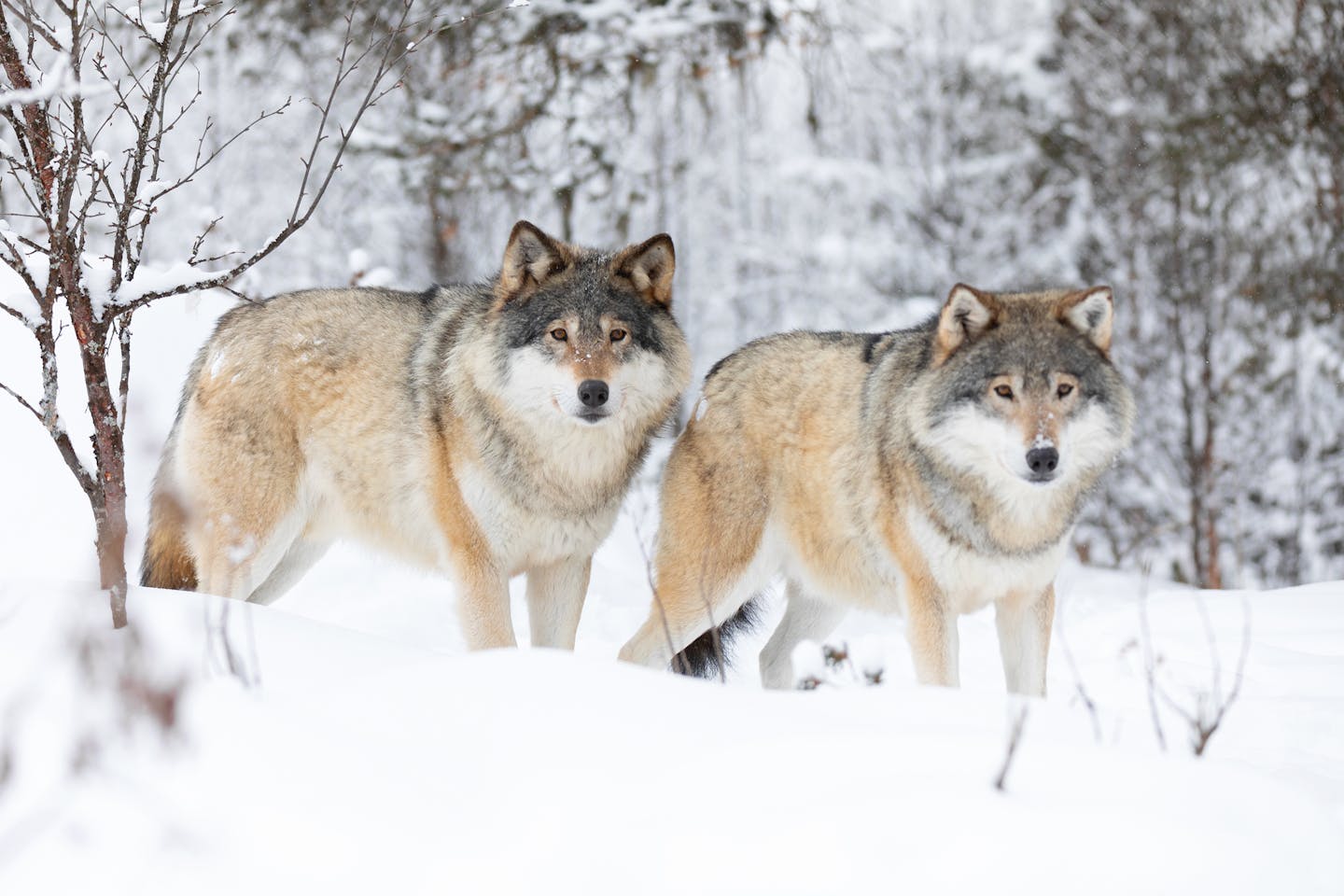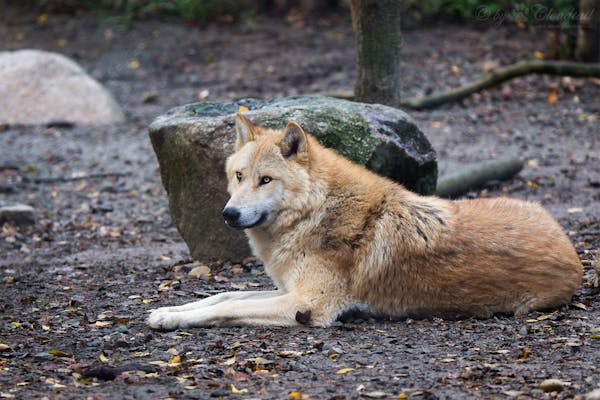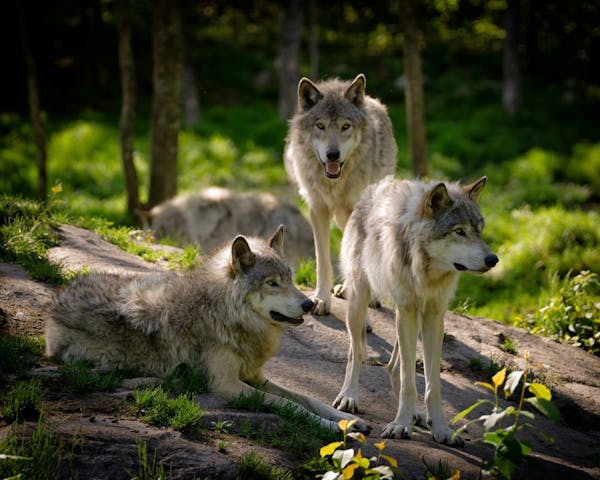Gray wolves: Guardians of the wild and symbols of strength across cultures
- Nature Conservation
- Land Conservation
- Mammal Assemblages
- Iconic Species
- Wildlife
- Mammals
- European Mountain Forests
- Western Eurasia Realm
One Earth’s “Species of the Week” series highlights an iconic species that represents the unique biogeography of each of the 185 bioregions of the Earth.
A creature of legend
The wolf has long been a key feature of myth and legend throughout its range, contributing to both its reverence and persecution. From the werewolves and “Big Bad Wolf” tropes of European folklore to the totems of North American Indigenous clans, wolves have symbolized everything from greed and lechery to loyalty and courage.
In Chechnya, for example, the wolf is a national symbol of strength and freedom; according to folklore, the Chechens are “born of a she-wolf.” The North American Pawnee were known as the “Wolf People” to neighboring tribes, and they called the Milky Way the “Wolf Road.”.
In Navajo culture, wolves are sometimes considered powerful witches that can bestow peace and protection. Many Indigenous cultures have recognized the familial devotion and cooperative nature of wolf packs, honoring their intelligence and resilience.
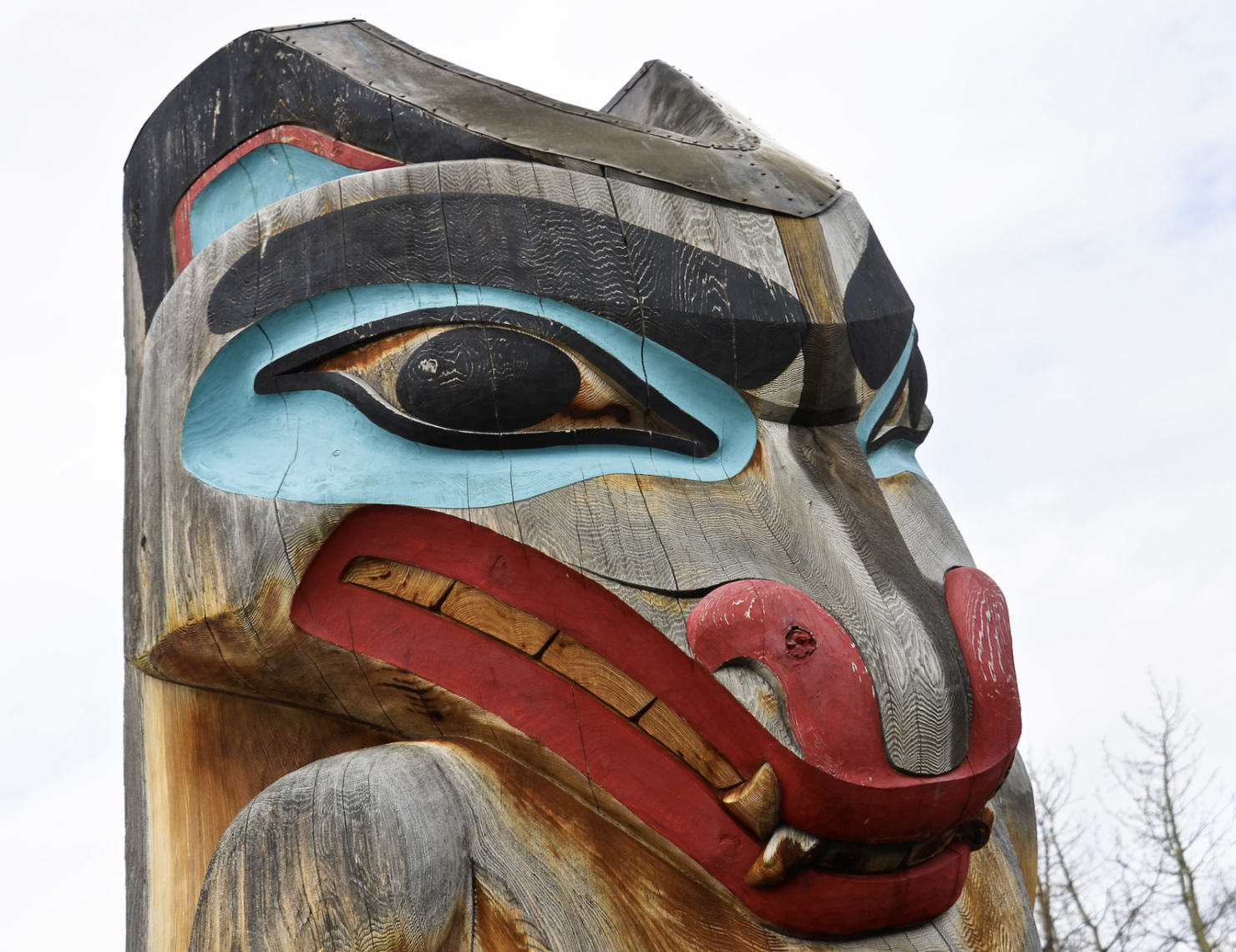
Close-up of wood carved wolf totem pole in Canada. Image credit:© Reinhardt | Dreamstime
Gray wolves and their canine ancestry
Gray wolves (Canis lupus) are members of the largest extant species in the Canidae family, which includes dogs, wolves, coyotes, jackals, and foxes. Genomic studies suggest that modern wolves and dogs descended from the same ancestral wolf population extant between 30,000 and 20,000 years ago, though scientific understanding of wolf ancestry and dog domestication is constantly evolving.
Historical range now threatened
Gray wolves once roamed vast stretches of North America and Eurasia, making them one of the most widely distributed terrestrial mammals. With 36–40 subspecies dispersed worldwide, the global range of gray wolves has been reduced by over a quarter due to extermination campaigns and ongoing persecution in regions without legal protections.

Gray wolves (Canis lupus) are the iconic species of the Carpathian Mountain & Plains Mixed Forests bioregion (PA14), located in the European Mountain Forests subrealm of Western Eurasia.
Physical traits and lifespan
Gray wolves typically have a muscular, deep-chested body, long slender limbs, a bushy tail, a long slender muzzle, and large erect ears. Females usually weigh between 27 and 36 kilograms (60–80 lbs), while males can weigh up to 59 kilograms (130 lbs).
While their fur is generally long and light brown to gray with some black, some individuals or populations exhibit all-black or all-white coats. In the wild, few wolves live beyond four or five years, though females as old as 11 have been documented having litters.
Pack structure and breeding habits
Gray wolves are most often found in family groups called packs, consisting of an adult pair, their offspring, and occasionally other relatives or immigrant individuals. The leader of the family group is typically the female or male wolf who initiates activity, guides movements, and makes decisions.
Wolves have one breeding season a year, usually during winter (between January and March, depending on location), and females have a 60- to 63-day gestation period.
.jpg)
Gray wolf pack in forest. Image credit: Pat-s Pictures, Shutterstock
Social intelligence and cooperative behavior
Gray wolves are sentient, self-aware, and social animals, each with distinct cultures and personalities. Communication plays a key role in coordination, cooperation, and relationship-building within wolf family groups.
For example, wolves exhibit behaviors rare among large carnivores, such as coordinated hunting. Pack members remain aware of one another’s positions and adapt their hunting styles to their prey.
Diet and hunting habits
Gray wolves are predominately predators of mammals larger than themselves. Typical prey include deer, elk, caribou, bison, moose, muskox, and mountain sheep, though wolves will sometimes hunt smaller mammals as well.
While wolves were once thought to be obligate carnivores (eating only meat), they’re now considered facultative carnivores (primarily eating meat but capable of subsisting on other foods). Recent studies have shown that blueberries are a part of the summer diets of adult wolves in the Great Lakes, and adults have been observed regurgitating blueberries as a food source for pups.
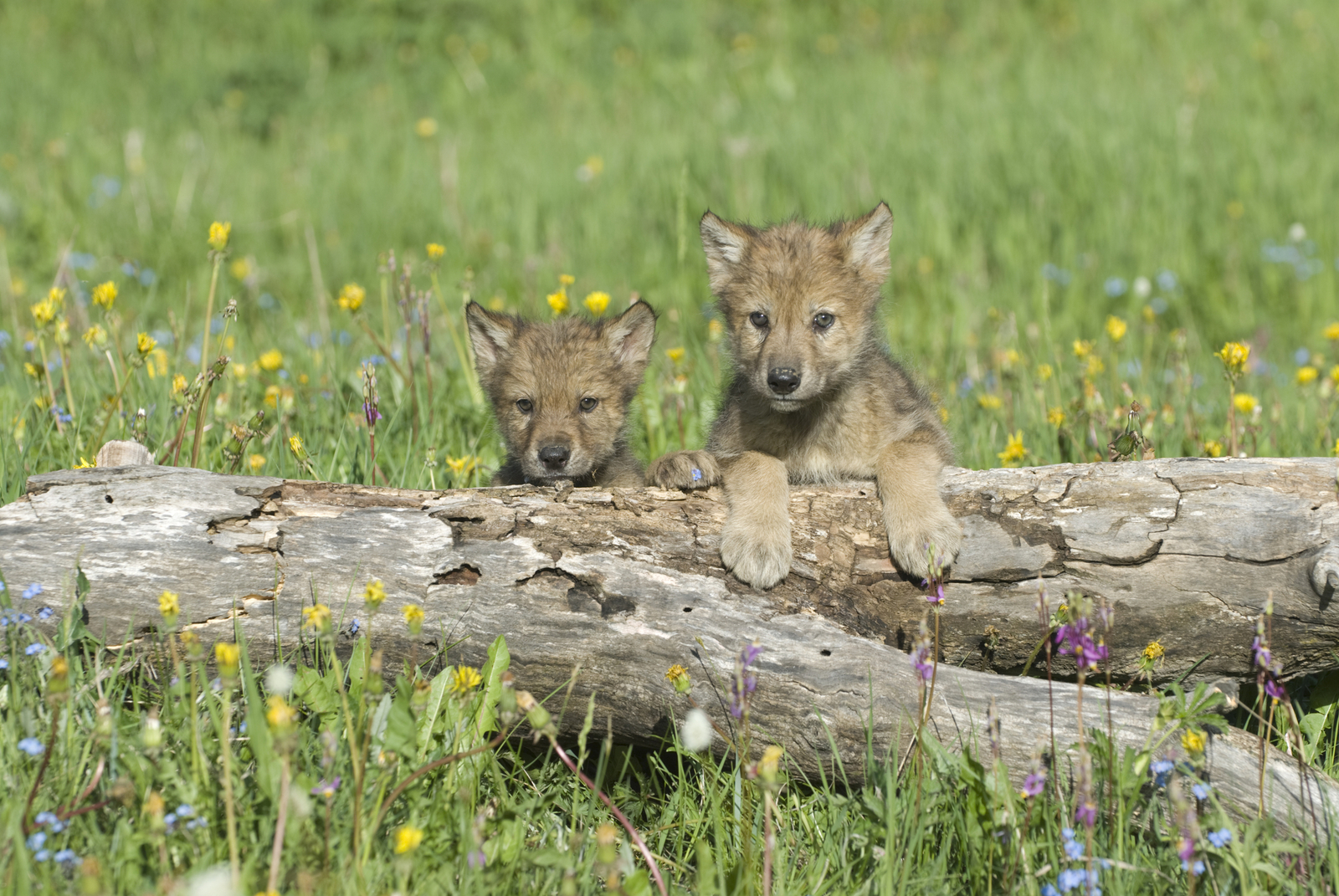
Gray wolf cubs near their den in Colorado, US. Image credit: © Outdoorsman | Dreamstime
A keystone species and ecosystem regulators
Like many large carnivores, wolves play a critical role in maintaining ecological and evolutionary processes that benefit biodiversity and humans. Wolves provide top-down regulation of ecosystems, impacting many plants and animals through direct and indirect effects on the food web—a phenomenon known as a “trophic cascade.” As such, wolves are considered a keystone species.
Wolves also influence the ecology and evolution of their wild prey and help mitigate disease transmission in prey populations.
Addressing human conflict and threats
As apex predators, wolves experience little mortality from other species (aside from parasites and occasionally mountain lions) in their natural environment. Most wolf mortality comes from human activities.
Habitat fragmentation, urban sprawl, and animal agriculture have exacerbated human-wolf conflicts. These issues are further complicated by inadequate regulatory protections, authorized hunting and trapping, illegal killings, and insufficient law enforcement. Conflicts with livestock and ungulate hunters in wolf habitats also contribute to the problem.
Killing wolves disrupts family groups, leading to negative behavioral, physiological, social, ecological, and evolutionary impacts. The cooperative behaviors essential to wolf ecology and dynamics are hindered when family groups are disrupted, limiting their ecological role.
.%20Finland.%20Copyright%20Gregoire%20Dubois.jpg)
A gray wolf in Finland. Image credit: © Gregoire Dubois
The importance of conservation and human-wolf coexistence
Protecting wolves as part of responsible stewardship programs is a win-win for everyone. Not only do wolves help maintain healthy ecosystems, but they also provide significant economic benefits through wildlife tourism—Yellowstone National Park is a prime example.
Coexistence between humans and wolves presents many challenges, requiring shifts in long-held beliefs, values, and practices regarding animal agriculture and human development in wolf-occupied areas. Fortunately, many resources and organizations, such as Project Coyote, now exist to educate and assist ranchers, wildlife managers, and community leaders with evolving techniques that keep both people and domestic animals safe without harming wolves.
Project Coyote is a national non-profit organization based in Northern California whose mission is to promote compassionate conservation and coexistence between people and wildlife through education, science, and advocacy. We are proud to have Project Coyote as one of One Earth's place-based partners.
Rewilding gray wolves: A key strategy for global ecosystem restoration
In addition to targeted conservation efforts, reintroducing gray wolves is part of a broader strategy outlined in a One Earth-supported study, which highlights the significant potential of rewilding large mammals for ecosystem restoration. This study, published in the journal Ecography, reveals that reintroducing just 20 key large mammals—including gray wolves, brown bears, and bison—could restore over 8.5 million square kilometers of land globally.
These large mammals act as crucial landscape engineers, influencing everything from plant life to wildlife and maintaining ecological balance. The successful reintroduction of gray wolves in places like Yellowstone National Park highlights their vital role in restoring ecosystem integrity and delivering substantial ecological and economic benefits.
%20shutterstock_136124996.jpg)
A portrait of a gray wolf. Image credit: Holly Kuchera, Shutterstock
Enduring symbol of the wild
Gray wolves have captivated human imagination for centuries, embodying both the mystique of the wild and the complexities of human interaction with nature. From their deep roots in myth and culture to their critical role in ecosystems, these remarkable animals continue to be both revered and misunderstood.
As we move forward, the importance of protecting and reintroducing gray wolves becomes more evident—not only for their survival but also for the health of the planet’s ecosystems. By embracing coexistence and conservation, we honor the legacy of this iconic species and help ensure its place in the world for generations to come.
Support Nature Conservation